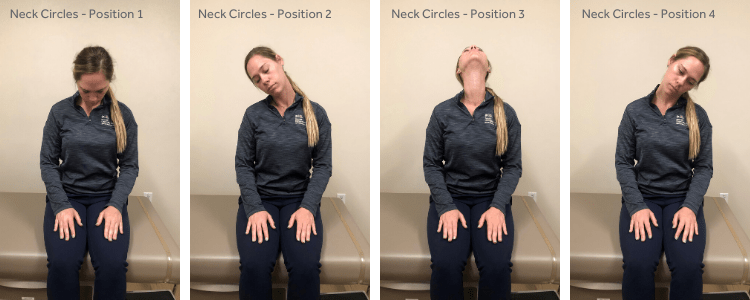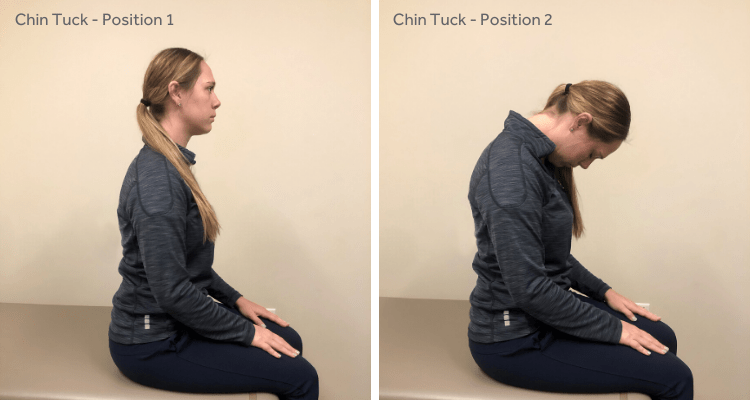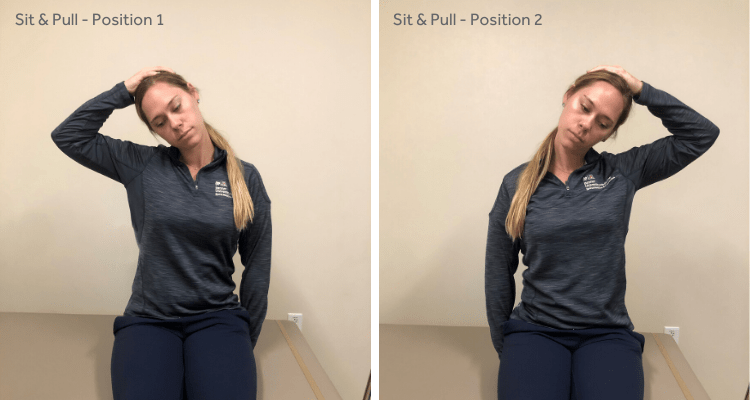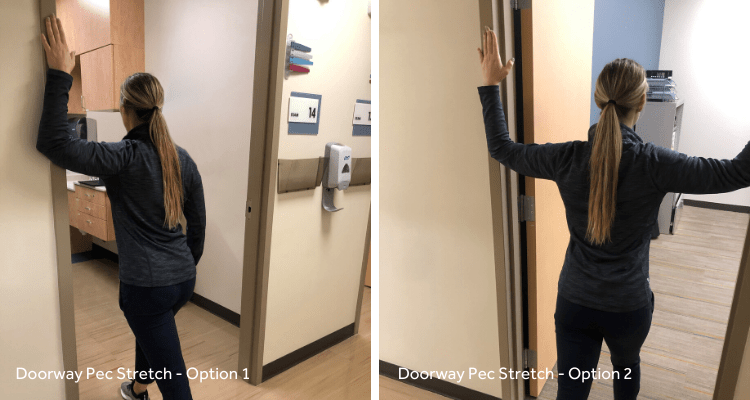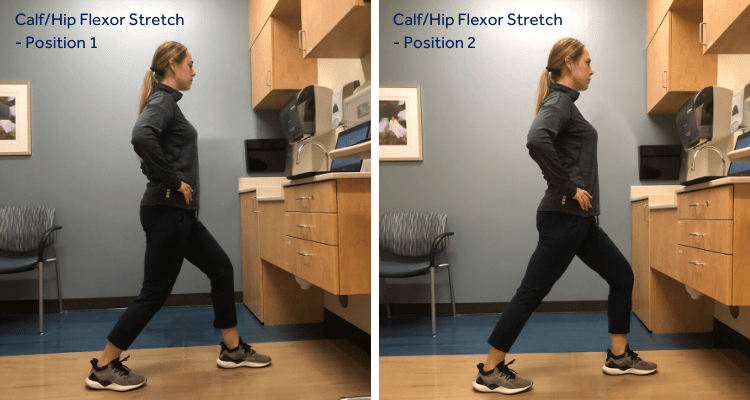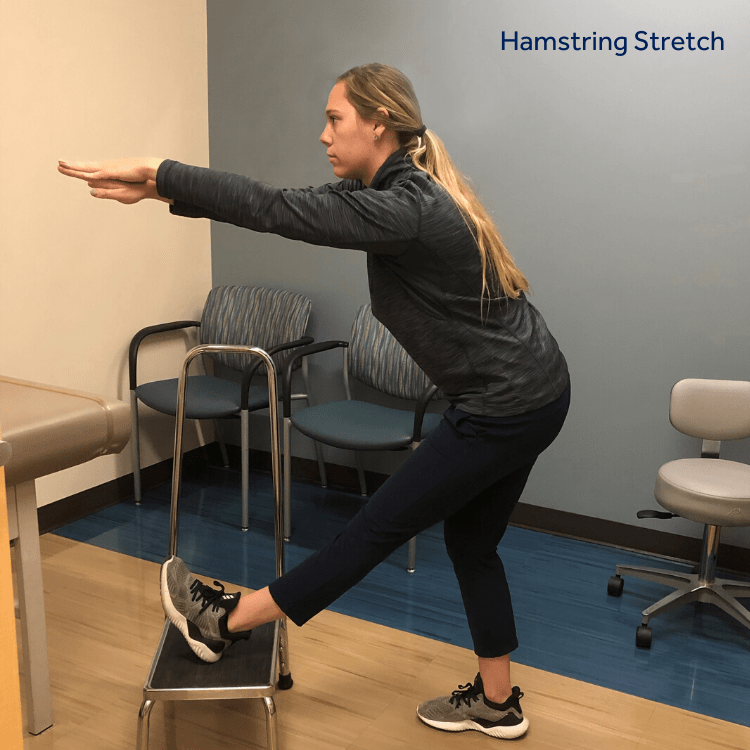With millions of Americans working and learning from home, it can be tough – not only mentally, but physically. Some of you may be lucky enough to have a proper workspace for everyone, but many are crammed at the kitchen table, slouched on the couch or lounging in bed fielding business calls and Zearn lessons. Soon enough you may find that your back, hands and joints aren’t very happy—they’re aching.
Erica Illium, an athletic trainer with at Banner – University Medicine shared tips for rehabbing your WFH (work-from-home) or LFH (learn-from-home) space without breaking the bank or your back. She also provided some stretches to keep you at the top of your working/learning game.
Rehabbing your WFH/LFH space
1. Designate an area for work
“While it makes sense that everyone has a different area to work, in reality most of us have space limitations,” Illium said. “Identify an area for each of you to work where you won’t compete for space. Working at a kitchen table with proper chair height is ideal.”
To reinforce good posture, you’ll want the height of the table to be at the belly button or a few finger widths above the belly button and your elbows should rest comfortably on the table at a 90-degree angle. You can comfortably adjust your height using a pillow. If the weather is nice, try sitting at your patio table with one of your sturdy chairs.
If you have conference or business calls, you can stand and talk or create your own standing desk by shifting books or a closed cardboard box to move your laptop to eye level.
2. Use an external keyboard and headset
If you’ll be working from home for a while, it’s not a bad idea to purchase yourself an external keyboard and headset if you’ll be on your laptop and phone quite a bit.
Laptops are condensed for convenience but aren’t ideal for postural ergonomics. Keyboards that change angles or tilt are good options for avoiding carpal tunnel syndrome and other joint issues. If you don’t have earbuds but will be on the phone quite a bit, a headset can help with improper shoulder and wrist positioning and neck posture.
3. Avoid working in bed (if possible)
Not only will this wreak havoc on your posture and increase your risk for joint and back pain, it can also interfere with your sleep. If you can’t avoid the bedroom, at the very least save the bed for bedtime.
4. Take frequent breaks
Frequent breaks are crucial in this time. Take a break every hour to give you and your family the mental refocus needed to complete tasks. Stretching (check out the suggestions below) is encouraged to increase blood flow, decrease stiff muscles, reset postural habits and prevent chronic issues like back pain.
“When we sit for long periods of time, we tend to disengage certain muscle groups like our core, which then in turn, changes positioning of our hips which can be a contributor of back pain,” Illium said.
Yoga and meditation are great practices for a mental recharge and are easily done in a home setting. With longer breaks available, it is still acceptable to walk around the block while practicing social distancing. You can also engage in an at-home fitness class.
Got Kids at Home?
Your children are normally at school for eight hours a day, but it is easy to forget their day includes constant social interaction, recess, snack breaks, walking from class to class and group activities. Do short physical activities with them in between assignments or create “challenges” between kids and parents. This way everyone is moving!
5. Look away … look away
We commonly overwhelm ourselves with screen time – whether personally or professionally. If you have to be on your computer or phone all day, take a few minutes away from the screen each hour to reset your mental clarity, encourage eye rest and gather fresh thoughts.
5 Stretches to combat WFH pains
When you are stuck at home, it’s easy to forget about caring for yourself. But in just eight minutes, scattered throughout your day, you can keep neck, back and body pain at bay. These are even kid-approved!
Neck circles + chin tucks
Benefits: great for posture and muscle anterior/posterior cervical muscle balance
Exercise: Five circles each direction; 10 tucks
Sit & pull
Benefits: great for posture; incorporates scalene, upper trap and cervical stretch
Exercise: Start ear to shoulder and hold 30 secs each side
Doorway pec stretch
Benefits: great for muscle balance and pec major/minor stretch
Exercise: Hold 1-min for each arm
Lunging calf/hip flexor stretch
Benefits: great for back pain and targets lower-body muscles
Exercise: Straight and bent knee for 30 secs each leg; add hip flexor for 30 secs each side
Hamstring stretches
Benefits: great for back pain; incorporates proximal/distal hamstring
Exercise: Place heel on raised platform (low desk/chair) and reach for wall; hold 1 min each leg
Want more? Try these bonus stretches
- Pelvic tilts (2 sets of 10): Stretches lower back as well as incorporates core strength
- Wrist circles (2 sets of 10 each directions)
- Prayer stretch or child’s pose (hold 15-30 secs; repeat 2-4x)
Remember safety first
If you have an injury or other condition affecting your joints, talk to your doctor or physical therapist if these stretches are good for you. You may have to modify. Whether or not you have injuries, remember to never stretch to the point of pain. If you are experiencing pain with any stretch, consult your doctor or healthcare provider. To find a Banner Health specialist near you, visit bannerhealth.com.
